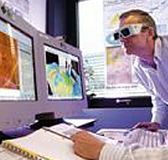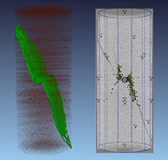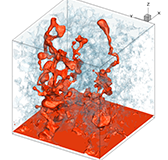Research Strategies
After several field projects involving actual CO2 injection, uncertainty and limitations in applied technology have been observed. The GSCO2 will identify basic science solutions to understand these observations, reduce the observed uncertainties, and develop or enhance new technology that can be used by industry.
The GSCO2 research staff expertise spans a wide range of fieldwork, laboratory experimentation, physical measurements, theory, numerical modeling, and data processing and interpretation. No single institution has the leading expertise in all of these research areas. Therefore, GSCO2 management has brought together top expertise from multiple institutions to engage in these research tasks; the management and research structure is such that appropriate experts are assembled and assigned integrated and collaborative responsibilities for specific areas of research. A center-approach for Science for Energy Technology (US DOE, 2010) must be strategic and focus on specific real problems in order to have a high probability of success with a BES solution compared to other BES approaches with less emphasis on technology and industrial applications. Because the GSCO2 consists of integrated teams of basic energy scientists and those applying technology or working in applied research, with plans for collaborative research, the GSCO2 will take positive steps toward bridging gaps between basic science and applied technology.

Research Themes

GSCO2 Research Aligned with US DOE OBS Priority Research Directions
The GSCO2 research is aligned with the three priority research directions (PRDs) identified in the Science for Energy Technology: Strengthening the Line between Basic Research and Industry Carbon Sequestration chapter (US DOE, 2010), one of the thirteen DOE Office of Basic Energy Science’s Basic Research Needs (BRN) workshop reports. Our basic energy science (BES) solutions are consistent with the Geosciences BRNs (US DOE, 2007a, 2007b). The three PRD recommendations—subsurface imaging and modeling, multiscale dynamics of flow and plume migration, and science and tools for very low rate processes—from the Carbon Sequestration panel, representing the opinions and experiences of industry, academia, and national labs, are in complete agreement and consistent with the GSCO2’s areas of research.
Basic science solutions to problems derived from real CO2 injection projects improve our basic understanding of carbon storage technology, which will increase public and regulatory confidence in our long-term ability to geologically store CO2. Understanding CO2 storage at the molecular and pore scale will lead to improving technology to make reliable predictions at the large, commercial scale.
- References
- US Department of Energy (US DOE). 2007a. Basic Research Needs for Geosciences: Facilitating 21st Century Energy Systems. Report from US DOE sponsored workshop held February 21–23, 2007, 285 pp. (Issued June 2007.)
- US Department of Energy (US DOE). 2007b. Directing Matter and Energy: Five Challenges for Science and the Imagination. Report from the Basic Energy Science Advisory Committee, 142 pp. (Issued December 20th, 2007.)
- US Department of Energy (US DOE). 2010. Science for Energy Technology: Strengthening the Link between Basic Research and Industry. Report of a subcommittee to the Basic Energy Science Advisory Committee, 230 pp. (Issued August 2010.)







